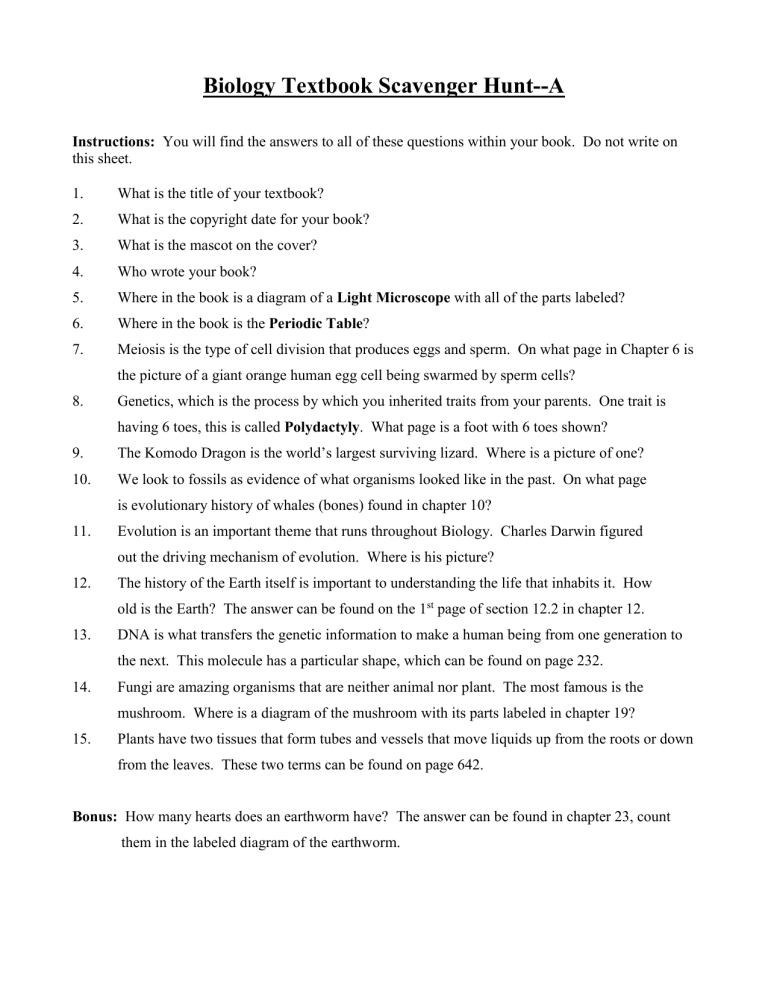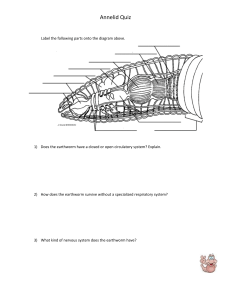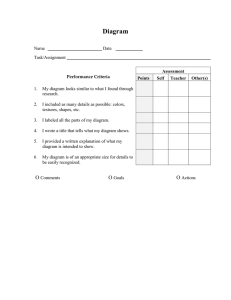
Biology Textbook Scavenger Hunt--A Instructions: You will find the answers to all of these questions within your book. Do not write on this sheet. 1. What is the title of your textbook? 2. What is the copyright date for your book? 3. What is the mascot on the cover? 4. Who wrote your book? 5. Where in the book is a diagram of a Light Microscope with all of the parts labeled? 6. Where in the book is the Periodic Table? 7. Meiosis is the type of cell division that produces eggs and sperm. On what page in Chapter 6 is the picture of a giant orange human egg cell being swarmed by sperm cells? 8. Genetics, which is the process by which you inherited traits from your parents. One trait is having 6 toes, this is called Polydactyly. What page is a foot with 6 toes shown? 9. The Komodo Dragon is the world’s largest surviving lizard. Where is a picture of one? 10. We look to fossils as evidence of what organisms looked like in the past. On what page is evolutionary history of whales (bones) found in chapter 10? 11. Evolution is an important theme that runs throughout Biology. Charles Darwin figured out the driving mechanism of evolution. Where is his picture? 12. The history of the Earth itself is important to understanding the life that inhabits it. How old is the Earth? The answer can be found on the 1st page of section 12.2 in chapter 12. 13. DNA is what transfers the genetic information to make a human being from one generation to the next. This molecule has a particular shape, which can be found on page 232. 14. Fungi are amazing organisms that are neither animal nor plant. The most famous is the mushroom. Where is a diagram of the mushroom with its parts labeled in chapter 19? 15. Plants have two tissues that form tubes and vessels that move liquids up from the roots or down from the leaves. These two terms can be found on page 642. Bonus: How many hearts does an earthworm have? The answer can be found in chapter 23, count them in the labeled diagram of the earthworm.


